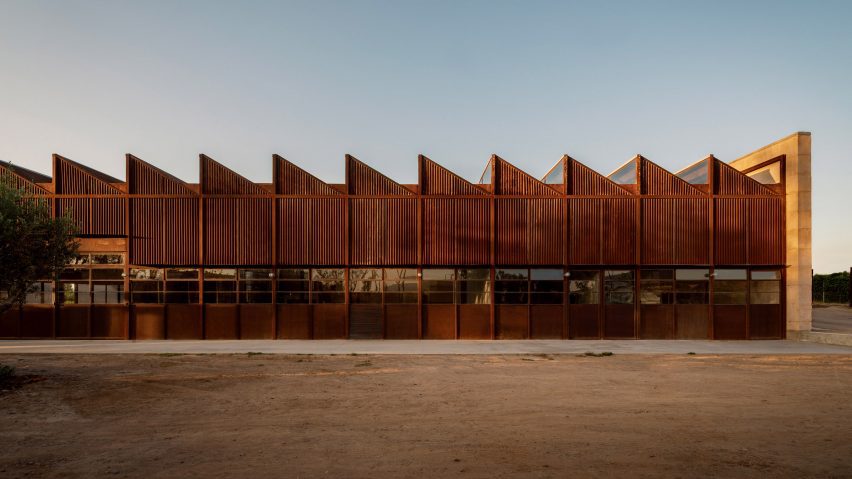
COA Arquitectura tops Mexico winery with sawtooth roof
Mexican studio COA Arquitectura has enclosed a winery outside of Guadalajara with a corrugated steel sawtooth roof and rammed earth walls.
Located in Aguascalientes, the 16,576-square-foot (1,540 square meters) Tierra Tinta Winery includes three buildings arranged in a loose triangle – the winery with a tasting room and cellar, separate restrooms and a third building which will house a future restaurant.
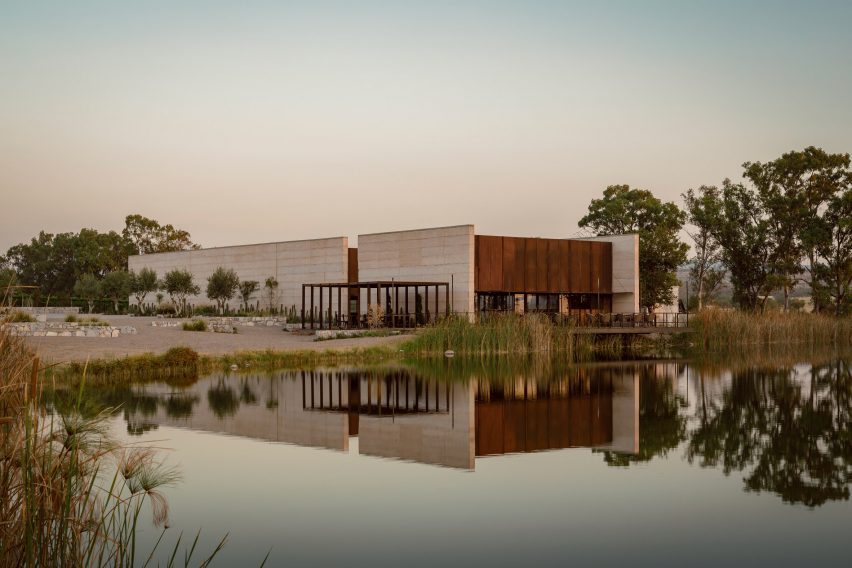
Each of the three buildings was arranged diagonally by COA Arquitectura to create "enclosures" between one another and "apertures" to the surrounding landscape, which includes the vineyard, the neighbouring Cerro del Muerto mountain and a small lake.
Informed by the agricultural buildings of the area, each building is enclosed in rammed earth walls that are freestanding, square or C-shaped and in-filled with metal and wood.
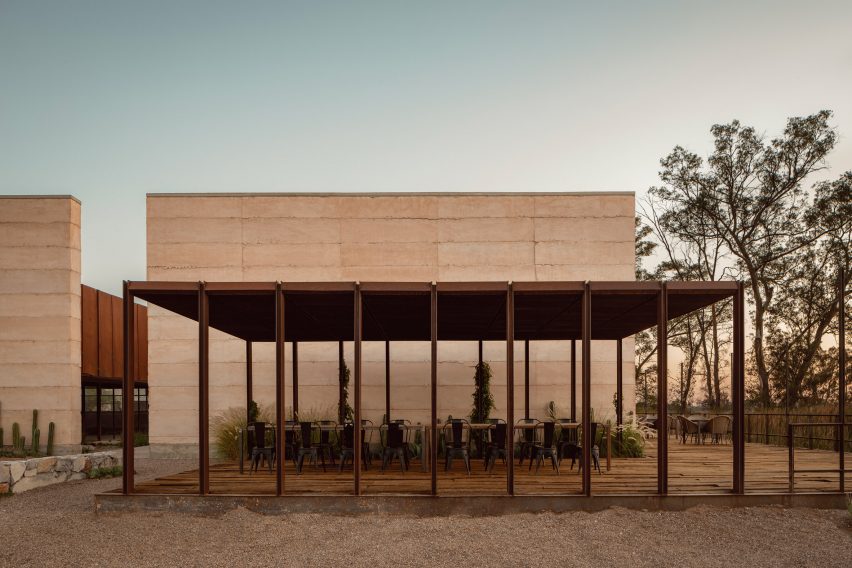
At their centre, low-lying desert vegetation such as cacti and olive trees were interspersed amongst stone benches that double as retaining walls for the grounds.
Visitors enter the main winery building at a slim gap between the heavy stone walls. From there, an open courtyard leads to a volume containing the production facilities on one side, while a tasting room and outdoor seating lie on the other.
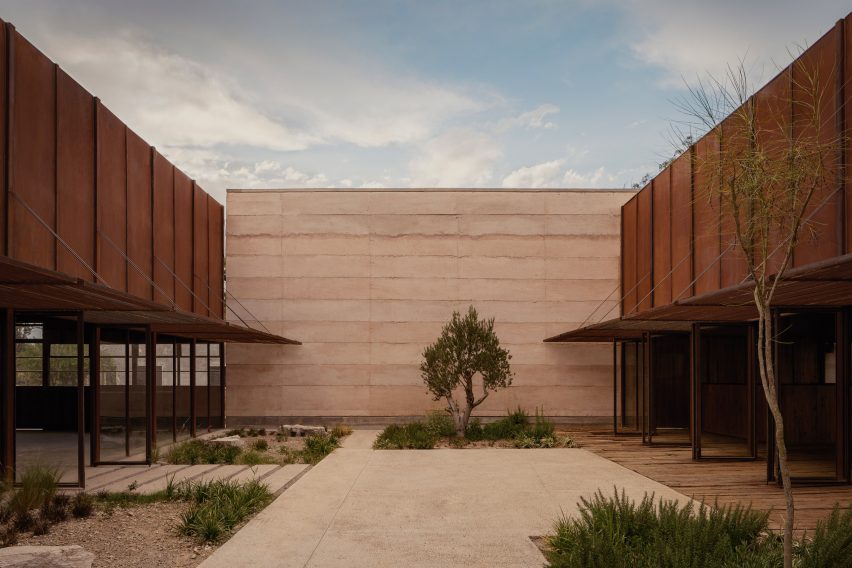
A sawtooth steel roof covers the length of the facilities, lying exposed and uncovered by the stone walls on its far side.
"The nave is roofed with corrugated steel sheets in a sawtooth shape taking light from the north through a steel door-window façade," said the studio.
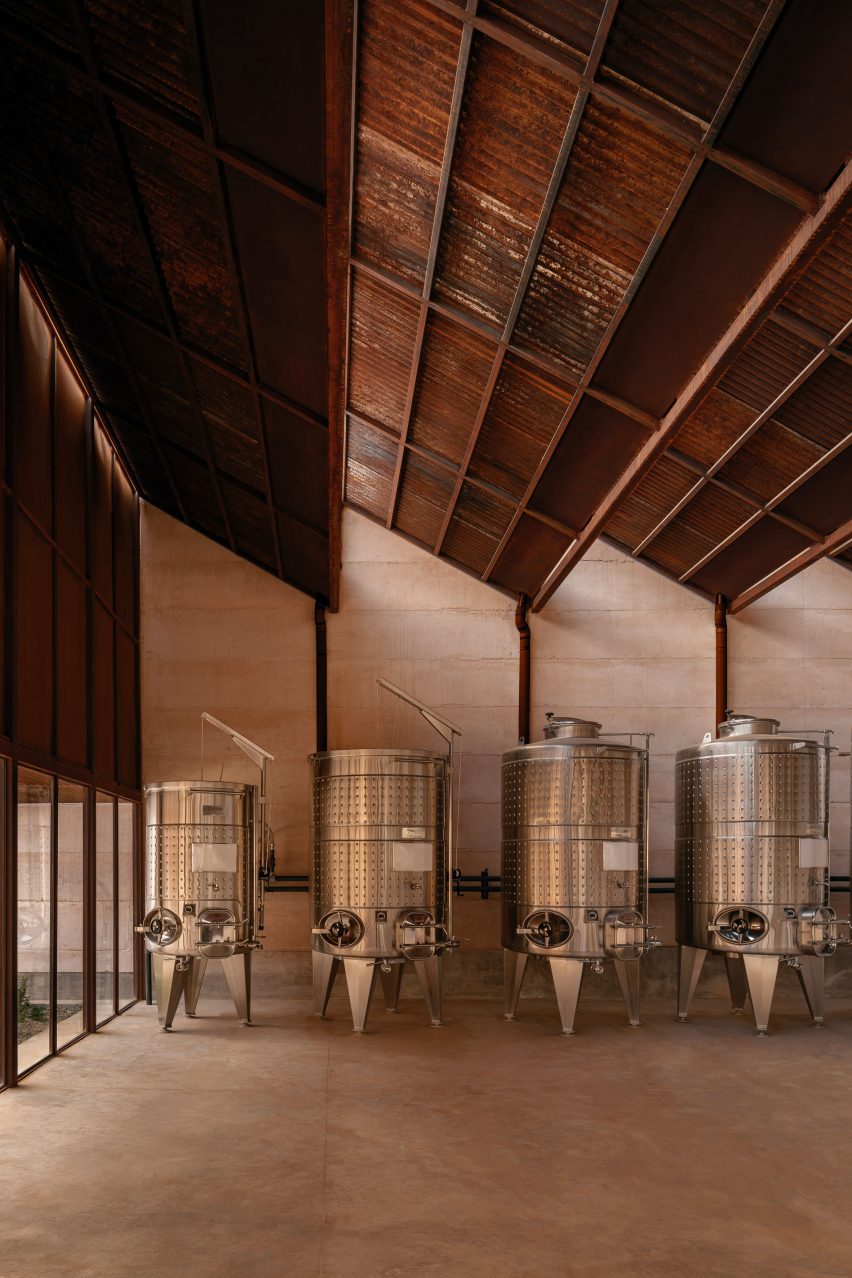
Both areas are fronted with slatted overhangs covering glass doors along each length.
The tasting room is layered with a rough wooden plank floor, bar and ceiling, and leads directly onto a patio suspended over the lake.
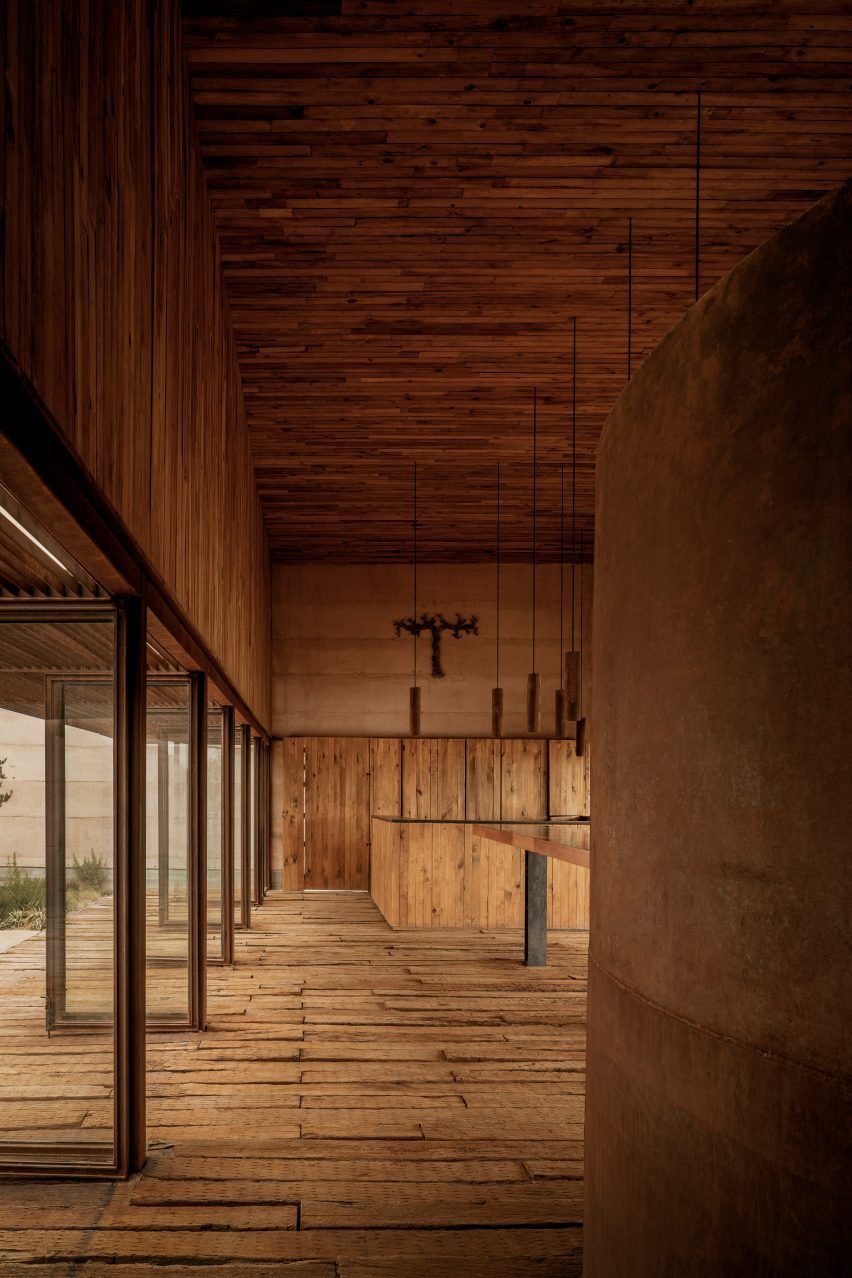
"The interior space is covered with train sleepers' floor and a wooden ceiling looking for warmth," said the studio.
"And in it, only four elements: a wardrobe fixed to the wall, a pair of counter tables and a steel cylinder that through a rear opening, leads to a spiral stairway that takes you to the cellar," it continued.
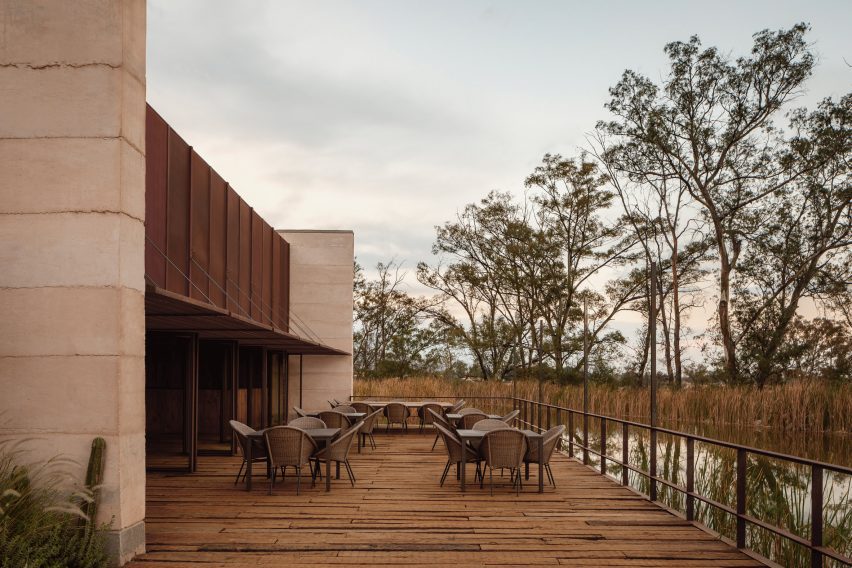
The tasting room's staircase leads into the cellar below – situated underneath the production facilities – which contains a large, subterranean tasting space.
"Once you are downstairs, a serpent-shaped pathway allows you to leave behind the natural light and dramatize the surprise upon arrival," said the studio.
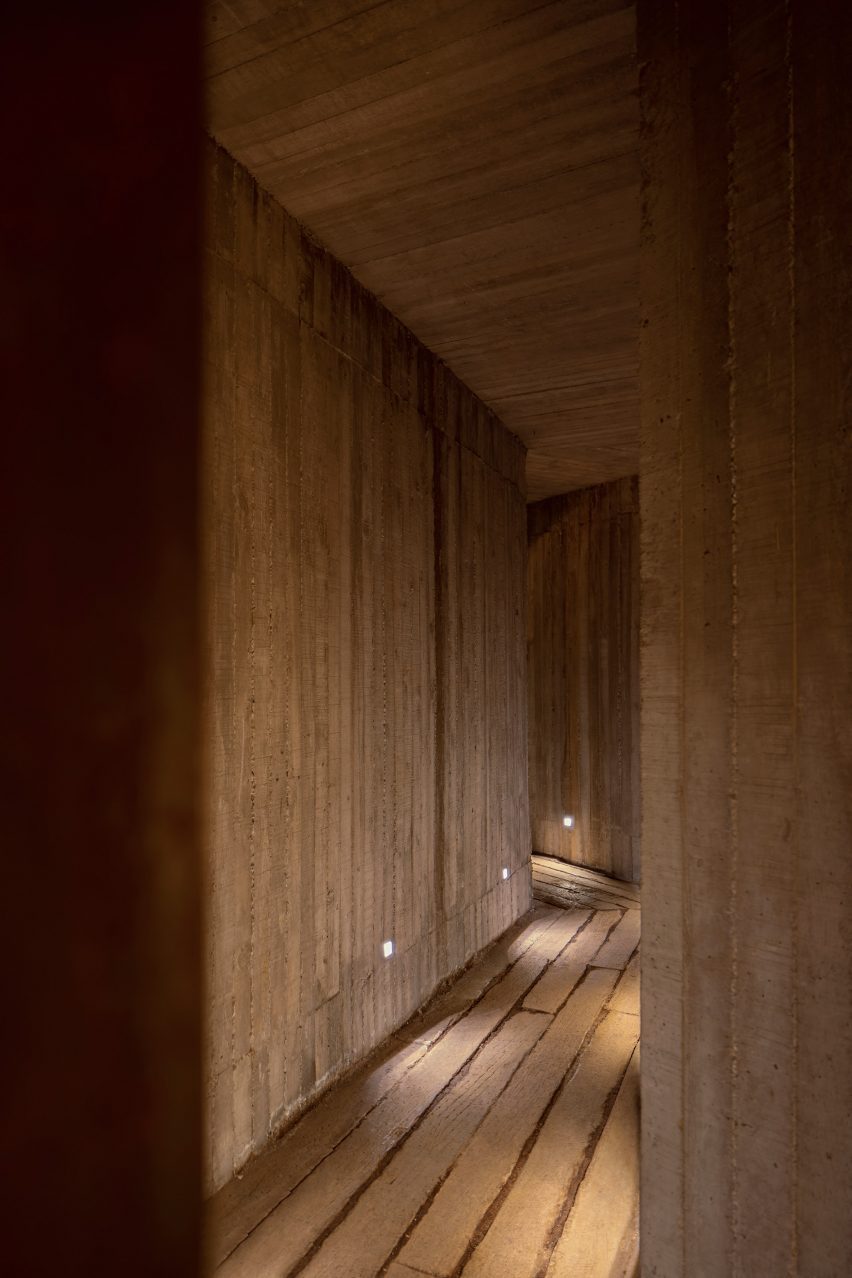
The basement space is supported by pillars running along its length and is backed by a steel wall and earthen walls on either side.
A slated ceiling runs its entirety, punctuated by cylindrical, steel-covered lighting pendants.
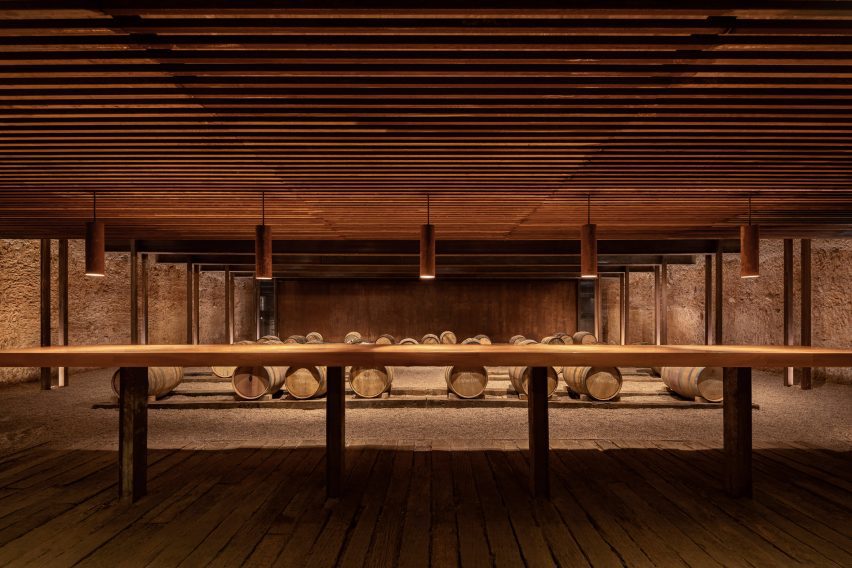
These lights were run over a long wooden table facing rows of wine barrels that sit on wooden tracks amongst a gravel floor.
The same rough-hewn floorboards create a small platform.
"A cabinet full of bottles, boulders moistened by water drops, a countertop and wine barrels on the floor complete the space searching for the ideal atmosphere for both the wine maturation and the wine enjoyment," said the studio.
Elsewhere, the same slim access is reflected in the earthen walls of the restroom outbuilding and eventual restaurant.
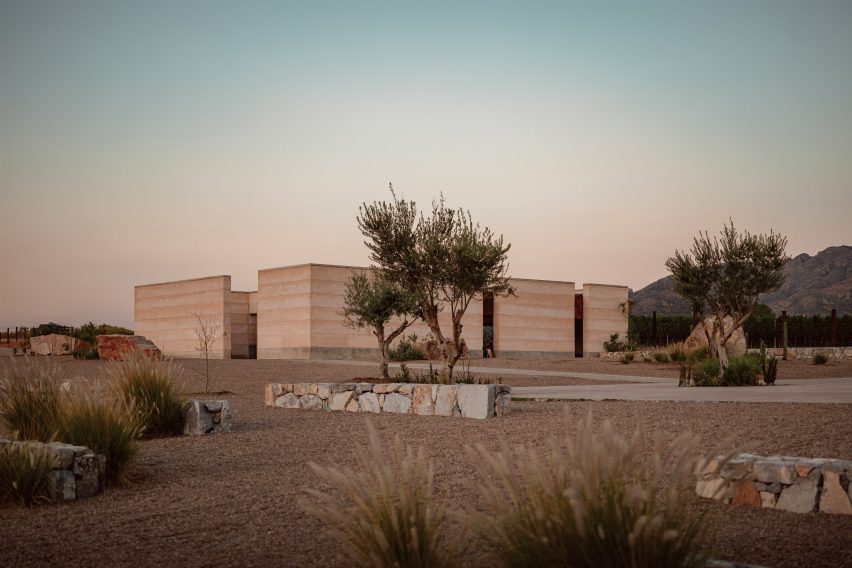
An open courtyard in the restroom building leads to either bathroom, which is outfitted with a long, suspended steel sink and stalls with wooden doors.
Natural stone walls and a steel metal roof complete the space.
COA Arquitectura recently completed a monolithic forest home in Jalisco. Dezeen recently rounded up twelve other vineyard projects from around the globe.
The photography is by César Béjar
Project credits:
Francisco Gutiérrez
Project Manager: Catalina Joya
Collaborators: Tania Robles, María Morales, Edgar Ramírez
Structural engineering: CEROMOTION,Juan Jesús Aguirre